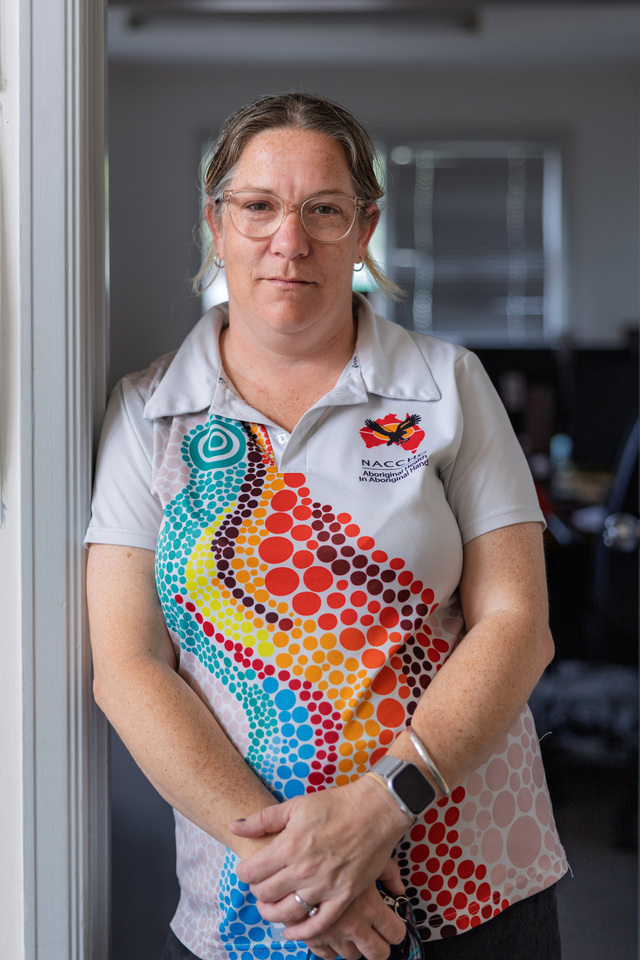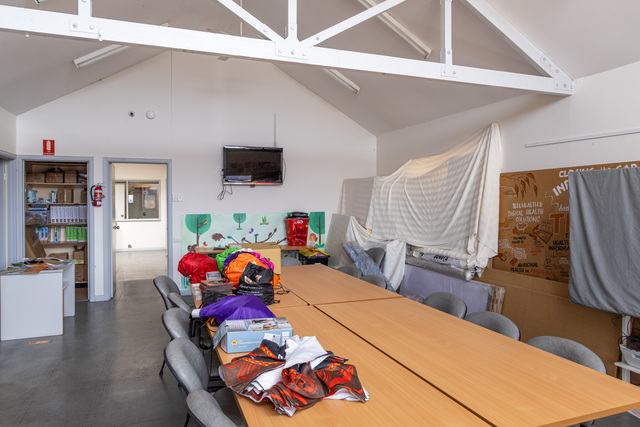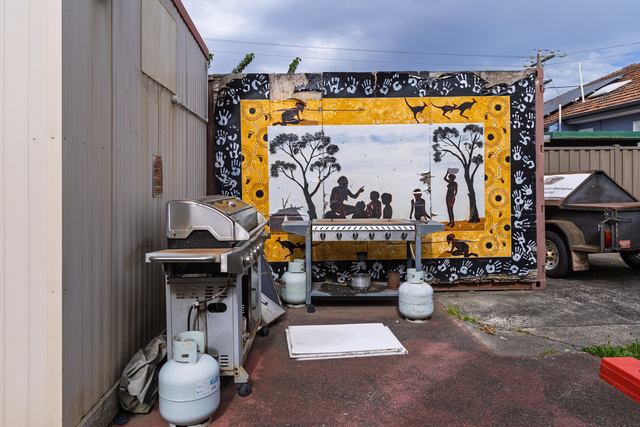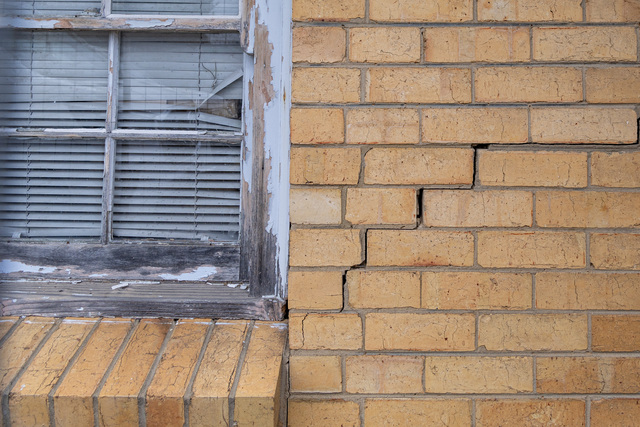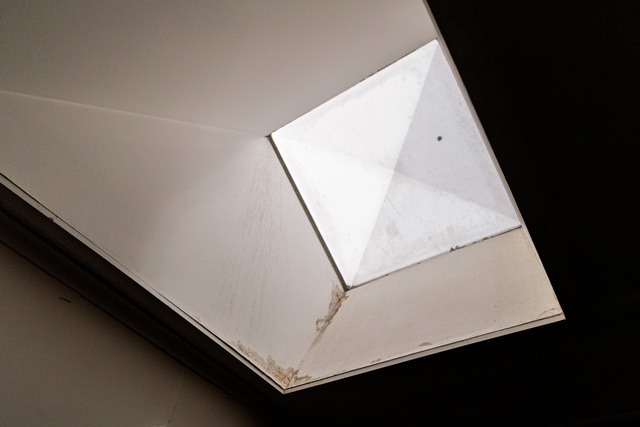A long-running service to support Aboriginal health and wellbeing in Dandenong has closed one of its buildings, with its future in doubt.
Rain leaking through the windows and cracked walls, a jammed front door, a roof with holes, exposed asbestos and the building structure shifting on stumps.
These are just some of the things staff and community members had to deal with at the Dandenong and Districts Aborigines Co-Operative Limited before they decided to evacuate the Stud Rd building for their own health and safety in August.
Their adjoining clinical building remains open but in a tired state.
Chief executive Jenny Ockwell says their team has worked in “substandard” conditions for a decade but the organisation’s community program facility has finally succumbed.
“It’s been substandard for a very long time and its unfortunate where it’s got to the point that we had exposed asbestos, so we had to get out.
“We had a super-clean done, and a month later they redid it to ensure there’s no immediate risk.”
The facility used to run community programs to drive social engagement and wellbeing – monthly community lunches, and a weekly elders group and mums and bubs group.
The DDACL is a “one stop shop” with an adjoining clinical building to provide health care through their Bunurong Aboriginal Health Service.
The Dandenong facility is one of the 200 Aboriginal health and wellbeing facilities across the state, according to a recent report co-authored by Infrastructure Victoria and The Victorian Aboriginal Community Controlled Health Organisation (VACCHO).
The report has revealed more than half of those buildings are already at the end of their economic life with 82 per cent of the community-controlled health organisations need to be replaced or require substantial repairs within the next 15 years.
The buildings assessed are 40 years old on average with 17 of them more than 100 years old.
The oldest building is 174 years old.
DDACL was established on Stud Rd in 1975 however Ms Ockwell says even then it was an old building estimating it to be established in the early 1950’s-60’s.
Since April, 13 staff members are either working from home or from their six-month-leased office space in Cranbourne with some outreach work.
The temporary accommodation contract can be extended for another six months however, community members can’t be seen in the new space as it’s a corporate space.
Service delivery is down 20 per cent to 70 per cent as a result.
Considering the population of Aboriginal and Torres Strait Islanders in the City of Casey, Ms Ockwell says their service delivery will only increase in the new space. However, the main issue remains the lack of community area which is crucial in the Aboriginal culture.
“The beauty of Dandenong was we had a barbeque, we had an outdoors sitting area, community room. We don’t have that anymore because it’s not our building, it’s a private office block.
“The accommodation in Cranbourne is temporary. We can’t afford to stay there, it’s chewing up our funding.
“We desperately need to get our own site, wherever that is, somewhere we can say is ours, with an outdoor area.”
The “fracture in location” is causing great concern for the DDACL.
“It’s an ongoing challenge to ensure that our internal referral pathways remain relevant,” Ms Ockwell says.
“Now that we’re fractured and we’re not in the same environment, we’re doing what mainstream does – electronic referral.
“It’s challenging maintaining the high-quality services we provide.”
The organisation had spent $22,000 secured through funding on the repair of its roof, cracked walls, wall paint, floor and so much more only for everything to crack again “almost immediately” as they realised the stumps were sinking.
“It’s something we needed for well over 20 years. Some community members are excited, others are quite sentimental about it and feel we should knock it down and rebuild it. But the site has no capacity for the growth that we need to be to be sustainable.”
Prior to this, the building was a “hive of activity”, says clinical services manager Tarni Cooper a Wurundjeri woman who has been with the organisation for 20 years.
“To run groups now we have to hire a facility we don’t have our space and we can’t put artworks up or posters up as it’s not ours.
“Aboriginal community-controlled health organisations is about a holistic approach. So having staff re-locate from here is difficult because they are offsite and there’s travel times.
“It has definitely changed a lot.”
The clinical building which houses GPs and staff to support the health of the Aboriginal community members is open but also suffering due to lack of available space, lack of staff kitchen and car park spaces.
They have opted to transform storage rooms into GP offices, leased two container spaces as a kitchen and the other as a consultation room for people with Covid.
The containers are parked on the ‘Reserved’ car park spaces in front of the building, sacrificing the little parking spots they have.
The report has found that $150 million is needed to replace the facilities in high-risk, unsafe buildings with failing foundations, walls or roofs across the state.
Another $30 million of funding is needed each year over the next 5 years for ACCOs to urgently repair existing infrastructure.
Despite the tiresome state of the buildings, the Aboriginal community-controlled organisation models have proven to deliver quality outcomes, early interventions with reduction in pressure on other healthcare services.
VACCHO chief executive Dr Jill Gallagher AO said the great outcome by ACCOs is because it’s run by and for their communities.
“But most of our funding supports service delivery, not infrastructure. This creates an overwhelming administration and maintenance burden for our ACCOs.”
Most importantly, the report has found Aboriginal and Torres Strait Islander people are more likely to engage with healthcare services provided by ACCOs (73 per cent) than mainstream GP services (60 per cent).
ACCO’s impact is 50 per cent greater than if the same services were delivered through a mainstream health services.

